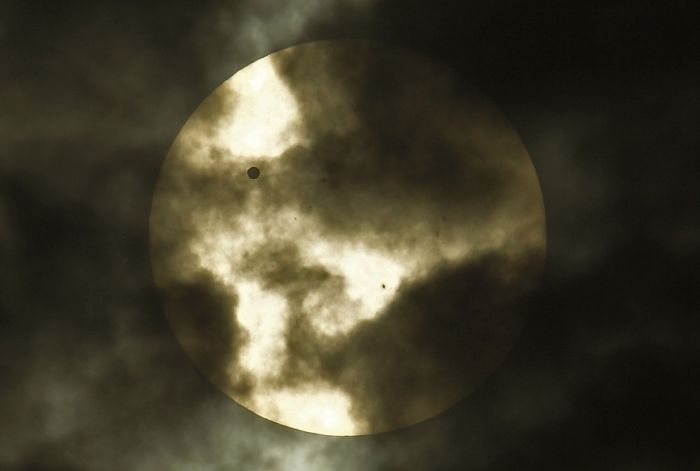|
|
Transit Of Venus Across The Sun
|
Although by the 17th century astronomers could calculate each planet's relative distance from the Sun in terms of the distance of the Earth from the Sun (an astronomical unit), an accurate absolute value of this distance had not been determined.
In 1627, Johannes Kepler became the first person to predict a transit of Venus, by predicting the 1631 event. His methods were not sufficiently accurate to predict that the transit would not be visible in most of Europe, and as a consequence, nobody was able to use his prediction to observe the phenomenon.
• 1639 – first scientific observation
The first recorded observation of a transit of Venus was made by Jeremiah Horrocks from his home at Carr House in Much Hoole, near Preston in England, on 4 December 1639 (24 November under the Julian calendar then in use in England). His friend, William Crabtree, also observed this transit from Broughton, near Manchester. Kepler had predicted transits in 1631 and 1761 and a near miss in 1639. Horrocks corrected Kepler's calculation for the orbit of Venus, realized that transits of Venus would occur in pairs 8 years apart, and so predicted the transit in 1639. Although he was uncertain of the exact time, he calculated that the transit was to begin at approximately 3:00 pm. Horrocks focused the image of the Sun through a simple telescope onto a piece of paper, where the image could be safely observed. After observing for most of the day, he was lucky to see the transit as clouds obscuring the Sun cleared at about 3:15 pm, just half an hour before sunset. Horrocks' observations allowed him to make a well-informed guess as to the size of Venus, as well as to make an estimate of the distance between the Earth and the Sun. He estimated that distance to be 59.4 million miles (95.6 Gm, 0.639 AU) – about two thirds of the actual distance of 93 million miles (149.6 million km), but a more accurate figure than any suggested up to that time. The observations were not published until 1661, well after Horrocks' death.
|
|









